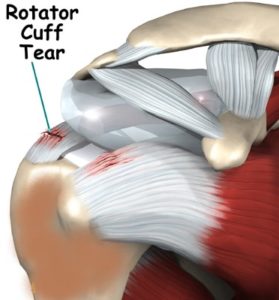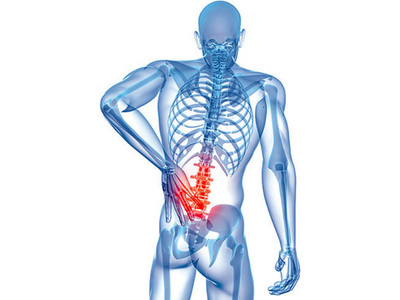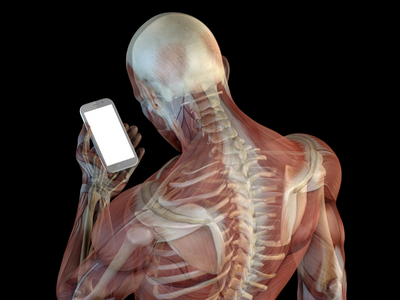With advance in newer treatment techniques, it is imperative as a physio for me to make you understand different kinds of shoulder pains. Another reason to pursue this topic is to provide readers help for rotator cuff pain and understand the differences in rotator cuff pain vs frozen shoulders. In this article we will be discussing mainly about Rotator cuff injuries (RCI) which occur in normal individuals. RCI includes the terms tendinitis, tendinosis, tendinopathy, partial thickness tear(PTT), full thickness tear(FTT) used for the rotator cuff injuries.
There is an increased incidence of shoulder pain in individuals who participate in repetitive overhead activities including repetitive throwing sports like baseball or volleyball, occupations such as painting or carpentry. Rotator Cuff Tendinopathy(RCT) is seen as the most common type of shoulder pain as it is seen in about 30% of the overall population.
RCT incidence also increases with age, which needs to be considered when we talk about Rotator Cuff Injuries.
Before getting to the details of this syndrome, its necessary to know about the anatomical structures involved.
ANATOMY AND BIOMECHANICS OF ROTATOR CUFF:-
In earlier days the area of pathology was identified mainly affecting the subacromial arch, the sub acromial bursa, the supraspinatus tendon. Recent research, adds to the affection of rotator cuff also. These rotator cuff muscles get pinched between the bones that form your shoulder leading to shoulder pain, this is a basic defination of RCS
The Rotator Cuff (RC)
The RC comprises of 4 muscles namely; the supraspinatus, subscapularis, infraspinatus and teres minor tendons. These RC tendons blend together with the biceps, the coracohumeral ligament and the capsule (Matava, Purcell & Rudzki, 2005 p. 1405-6). They form an aponeurotic tendon surrounding the head of the humerus that contribute to the stability, movement and sensory motor control of the GHJ.
This structure helps the RC to resist failure, since load is distributed over a wider area.
Rotator cuff tendon structure:-

Also known as the rotator cable described as a point of attachment of 4 rotator cuff muscles onto the arm bone. (The white area where the muscles are ending in the picture.) This area is a critical zone as the blood supply is limited and hence when subject to wear and tear it tends to develop tear and contributed to rotator cuff pathology.
CAUSES OF RCS:-
-
- Intratendinous degeneration or tendinosis might occur as a result of the combination of limited vascularity in Codman’s critical zone and external compression of the tendon structures in the subacromial space’
- As these tendons become weak, indirectly the function of the rotator cuff muscle gropu becomes inefficient/ weak which affects the joint normal biomechanics. What happens is everytime the arm is lifted, the arm bone (humerus) tends to ride up hitting the sub acromial bursa/acromion bone, causing irritation.
- Nho et al. (2008, p. 988) suggest the influence of age and activity on the shape of the acromion, as well as environmental causes such as age, co-morbidities (like diabetes mellitus and smoking) and overuse in impairing the healing processes of the tendon.
- It seems that superior translation of the humeral head plays a significant role in the pathology (Lewis 2009a, p. 239).

- Chronic impingement can lead to bursal inflammation, tendonitis and can eventually cause degenerative changes and tears of the cuff tendons if not treated (Lin, Weintraub & Aragaki 2008, p. 627; Nho et al. 2008, p. 988).
In summary the etiology of Rotator Cuff disease is multifactorial, including both intrinsic and extrinsic factors. It is believed that articular side tears are associated with intrinsic changes to the tendon and bursal side tears associated with SA impingement
Signs & Symptoms:-
RC pathologies (including SAIS) can manifest in anterolateral shoulder pain
- patient usually grabs the whole shoulder when describing the location
- aggravated in overhead activities,
- described as constant ache and
- night pain.
- Pain may radiate to the scapula/ neck/ elbow/ fingers, not in a dermatomal way
Examination
A thorough physiotherapy objective examination includes few rotator cuff syndrome tests:-
- Testing of the neck including ROM, palpation and provocation tests are done to rule out referred pain.
- The shoulder girdle is examined for atrophy, weakness and for shoulder blade and arm muscles asymmetry
- Active and passive shoulder ROM is assessed (where in we find that limited Active should er movements but passive movements are full
- strength in all planes is tested once the pain is in control.
- Tests for rotator cuff impingement or tears are performed, as well as a detailed neurovascular assessment is done.
Rotator Cuff Syndrome Radiology:-
MRI and ultrasound have comparably high accuracy for finding RC tears and biceps pathologies, clinical tests have moderate accuracy for both conditions.
Different causes of chronic shoulder pain
| The common causes | Other causes of pain are: | Causes of referred pain: |
|
|
|
New RC tendinopathy model (Lewis 2009)
At Physiocure we base our diagnosis and treatment based on this model.
The new model is based on the model by Cook and Purdam (2008), suggesting a continuum of tendon pathology. Each of the stages can be identified by imagery tools and has its own cause and clinical manifestation.
| Stage of Pathology | Signs & Symptoms | Treatment principals |
| Under-loaded tendon– | Inappropriate physiological stress will lead to tendon degradation. That stage is reversible if the tendon is properly loaded. | ‘reload the tendon in controlled and graduated manner’ (Lewis 2009c, p. 7). |
| Reactive tendinopathy–
|
Commonly seen in overloaded tendon (usually unaccustomed activity) and can involve the SAB.
In this stage the RC are unable to control the superior migration of the humeral head, leading to irritation of the RC by the acromion and the coracoacromial ligament. |
relative rest, biomechanical unloading interventions, reduction of pain and swelling, low load exercises, dietary changes (Lewis 2009c, p. 7-8). |
| Tendon disrepair-
|
This stage is associated with movement and activity. It’s characterized by substantial swelling, tendon degeneration, effusion and areas of neovascularity in the bursa. | Reduction of pain and neovascularity, exercises (gradually reloading the tendon), dietary changes, and consider surgery (Lewis 2009c, p. 7-8).
|
| Degenerated tendon–
|
This stage characterized by substantial structural failure such as partial, full thickness or massive RC tears. | As in previous stage, unless massive tear is present.
|
Treatment for rotator cuff syndrome:-
- Exercises are effective in reducing pain
- Home exercise is effective as supervised exercise.
- May be better effect if combined with manual therapy
- Activity modification; NSAID’s; physiotherapy to reestablish/maintain normal shoulder kinematics and stretch contracted capsule; thermal modalities to reduce pain and increase motion. Once pain decreases and ROM improves, strengthening of RC and the periscapular muscles should begin. Core and lower limb strength should be applied as well.
- A Cochrane review (2003) concluded that ‘for rotator cuff disease, subacromial steroid injection was demonstrated to have a small benefit over placebo in some trials however no benefit of subacromial steroid injection over NSAID was demonstrated’

- Correcting posture (scapula + thorax) with taping, increase Flexion and Abduction ROM and delayed the point at which pain was first experienced, but didn’t change pain intensity. The purpose of the tape was to extend the thoracic spine, and retract, depress and posteriorly tilt the scapula.
- Multiple Systematic Research studies concluded that using US is of minor value in the treatment of shoulder pain; therefore using US is of no value for treating impingement syndrome.
- ‘There is no data for or against the use of cold or heat as a modality; thus, their use must be optional at this point’.
- Combining nerve block with standard rehabilitation program can decrease severity and frequency of pain, improve the compliance with physiotherapy, and makes sleep better compare with standard therapy alone for patients suffering from RC tendinitis.
These 9 points on various types of treatments preferred for RCIS are based on systematic research studies and are usually followed at our Physiocure once the patient is examined and diagnosed correctly.
check out these rotator cuff syndrome exercises for strengthening the injured rotator cuff treatment at home.
Systematic research studies on Indication for Rotator cuff Repair
The indications for surgery are poorly described in outcome studies (Marx et al. 2009, p. 450).
Two studies (Wolf, Dunn & Wright 2007. p. 1014; Codsi 2007, p. 486) mentioned that duration of symptoms, acuity and size of tear, weakness, muscle atrophy and fatty infiltration are of importance as indicators for surgery.
Duration of symptoms -Several studies stated that tears might increase with time. Therefore, it makes sense to treat patients with Full Thickness Tear( FTT) conservatively for up to 3 month monitoring their improvement. Longer duration of symptoms can lead to histological changes to the muscle which can be irreversible and increase the difficulty of repair (Wolf, Dunn & Wright 2007, p. 1009). Matava (2005, p. 1412) and Codsi (2007, p. 486) suggest considering surgery if 3-6 months of conservative management had failed, but other patient factors, like activity level, can shorten that period.
Weakness- Strength less than 4/5, with positive shrug during active elevation, positive lag signs or positive drop arm sign are probably unlikely to respond to non-operative treatment (Wolf, Dunn & Wright 2007, p. 1013).
They recommend starting every treatment of symptomatic FTT with physical therapy and NSAID’S for up to 3 months (Oh et al 2006, p. 60). In addition activity level could be good demographic parameter to consider before recommending surgery (Oh et al 2006, p. 61).
Conclusion:-
Rotator cuff syndrome and subacromial impingement are well connected and can predispose to one another. Many theories have been suggested to try and explain the pathoaetiology of these disorders, but it is still a mystery to some extent.
The new approach is leading toward a continuum model of tendinopathy and might be of great help in the future, recognizing the need of adjustable management to a specific tendon state.
Finally, if conservative approach has failed, surgical treatment can be considered.
References:-
-
Beaudreuil, J, Nizard, R, Thomas, T, Peyre, M, Liotard, JP, Boileau, P, Marc, T, Dromard, C, Steyer, E, Bardin, T, Orcel, P & Walch, G 2009, ‘Contribution of clinical tests to the diagnosis of rotator cuff disease: A systematic literature review’, Joint Bone Spine , vol. 76, pp. 15-9.
-
Kuhn, JE 2009, ‘Exercise in the treatment of rotator cuff impingement: A systematic review and a synthesized evidence-based rehabilitation protocol’, Journal of Shoulder and Elbow Surgery, vol. 18, pp. 138-60.
-
Ainsworth, R & Lewis, JS 2007, ‘Exercise therapy for the conservative management of full thickness tears of the rotator cuff: a systematic review’, British Journal of Sports Medicine, vol. 41, pp. 200-10.
-
Lewis, JS, 2009c, ‘Rotator cuff tendinopathy: A model for the continuum of pathology and related management’, British Journal of Sports Medicine, DOI:10.1136/bjsm.2008.054817.
-
Ainsworth, R, Lewis, J & Conboy, V 2009, ‘A prospective randomized controlled clinical trial of a rehabilitation programme for patients with a diagnosis of massive rotator cuff tears of the shoulder’, Shoulder & Elbow, 1, pp. 55-60.
-
Buchbinder R, Green S, Youd JM. Corticosteroid injections for shoulder pain. Cochrane Database of Systematic Reviews 2003, Issue 1. Art. No.: CD004016. DOI: 10.1002/14651858.CD004016.
-
Cumpston M, Johnston RV, Wengier L, Buchbinder R. Topical glyceryl trinitrate for rotator cuffvdisease. Cochrane Database of Systematic Reviews 2009, Issue 3. Art. No.: CD006355. DOI: 10.1002/14651858.CD006355.pub2.
-
Ejnisman B, Andreoli CV, Soares BGO, Fallopa F, Peccin MS, Abdalla RJ, Cohen M. Interventions for tears of the rotator cuff in adults. Cochrane Database of Systematic Reviews 2004, Issue 1. Art. No.: CD002758. DOI: 10.1002/14651858.CD002758.pub2.
-
Hughes, PC, Taylor, NF & Green, RA 2008, ‘Most clinical tests cannot accurately diagnose rotator cuff pathology: a systematic review’, Australian Journal of Physiotherapy, vol. 54, pp. 159-70.
-
Lin, JC, Weintraub, N & Aragaki, DR 2008, ‘Nonsurgical Treatment for Rotator Cuff Injury in the Elderly’, Journal of American Medical Directors Association, vol. 9, no. 9, pp. 626-32.
-
Oh, LS, Wolf, BR, Hall, MP, Levy, BA & Marx, RG 2006, ‘Indications for Rotator Cuff Repair’, Clinical Orthopaedics and Related Research, no. 455, pp. 52-63.
-
Nho, SJ, Yadav, H, Shindle, MK & MacGillivray, JD 2008, ‘Rotator Cuff Degeneration’, The American Journal of Sports Medicine, 36, no. 5, pp. 987-93.
-
Marx, RG, Koulouvaris, P, Chu, SK & Levy, BA 2009, ‘Indications for Surgery in Clinical Outcome Studies of Rotator Cuff Repair’, Clinical Orthopaedics and Related Research, no. 467, pp. 450-6.
-
Lorenzo, LD, Pappagallo, M, Gimigliano, R, Palmieri, E, Saviano, E, Bello, A, Forte, A, Deblasio, E & Trombetti, C 2006, ‘Pain relief in early rehabilitation of rotator cuff tendinitis: any role for indirect suprascapular nerve block?’, Europa MedicoPhysica, 42, no. 3, pp. 195-204







